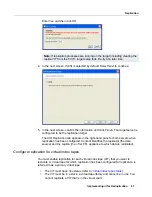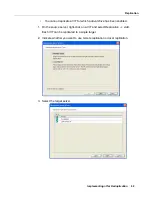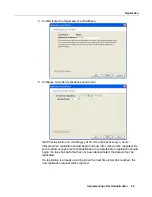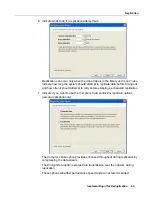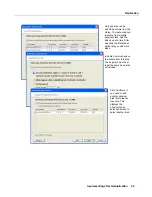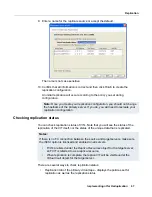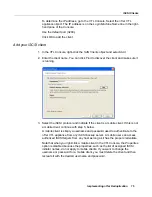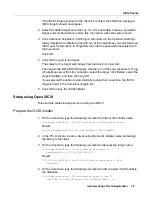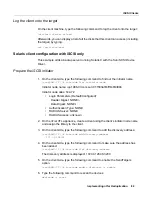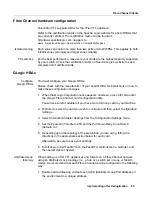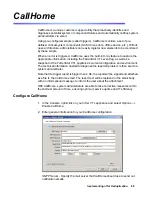
Implementing nTier Deduplication
73
iSCSI Clients
Overview
The nTier FalconStor VTL is protocol-independent and supports multiple outbound
target protocols, including iSCSI Target Mode.
iSCSI builds on top of the regular SCSI standard by using the IP network as the
connection link between various entities involved in a configuration. iSCSI inherits
many of the basic concepts of SCSI. For example, just like SCSI, the entity that
makes requests is called an
initiator
, while the entity that responds to requests is
called a
target
. Only an initiator can make requests to a target; not the other way
around. Each entity involved, initiator or target, is uniquely identified.
By default, when a backup server is added as an iSCSI client of a nTier FalconStor
VTL appliance, it becomes an iSCSI initiator.
The initiator name is important because it is the main identity of an iSCSI initiator.
Supported platforms
iSCSI target mode is supported for the following platforms:
•
Windows
; refer also to
’Controlling backup server access to the nTier
appliance’
•
Linux
•
Solaris
Use of Open iSCSI for backup server setup is also supported.
Managing iSCSI clients
On FalconStor VTL storage appliances, iSCSI is enabled by default and the SAN
client
Everyone_iSCSI
has already been created. This special SAN client does not
correspond to any specific backup server. Using this client, you can create iSCSI
targets that are accessible by any backup server that connects to the nTier VTL
appliance using the iSCSI protocol (refer to
’Using the built-in Everyone_iSCSI
client’
).
While such a publicly available target is convenient, it may not be appropriate for all
organizations. If your nTier VTL appliance will be shared by multiple backup servers,
you may want to use a “secured access” scheme, where access is dictated by
creating specific clients to represent specific backup servers instead of using the
built-in
Everyone_iSCSI
client. In this mode, each backup server can access
only
its
own designated virtual tape library or drives.



